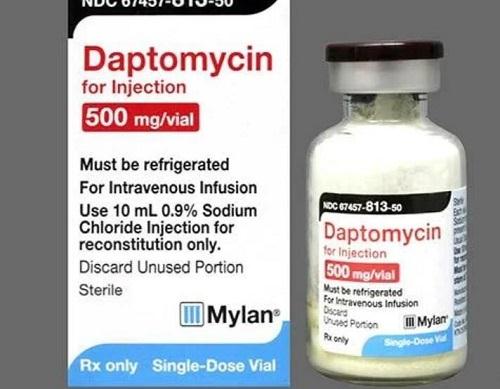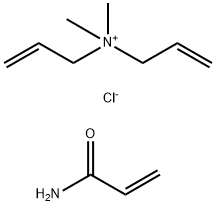Polyquaternium-7: Application and Safety
Dec 29,2022
General description
Polyquaternium-7 is a cationic copolymer with high charge density and excellent stability over a wide range of pH values, which makes it ideal for dry and wet chemical treatment of hair. Polyquaternary ammonium salt 7 applied in human hair and skin care.
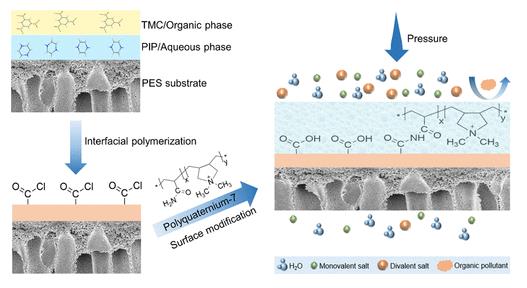
Fig. 1 Synthetic scheme of fabricating the PQ7-grafting polyamide NF membrane.
Application
Enhanced Desalination and Antifouling Performance
Polyamide nanofiltration (NF) membranes with enhanced desalination and fouling resistance were fabricated via grafting N, N-dimethyl-N-2-propenyl-2- propene-1- ammonium chloride-2-propenamide (polyquaternium-7, PQ7), which consists of dimethyl diallyl ammonium chloride and acrylamide monomers. Compared to the control polyamide NF membrane, the PQ7-grafting membrane exhibited higher hydrophilicity, rougher membrane surface, and stronger positive charge. The surface grafting process had no distinct influence on membrane thickness. After modification, the water flux of the resulting membrane improved from 47.8 to 79.6 L m(-2) h(-1) under 5 bar, showing a significant improvement in permeability. Meanwhile, the rejection to divalent ions was elevated to a superior level due to the introduction of the positively charged quaternary ammonium groups from PQ7. Furthermore, the antifouling evaluation indicated that the modified polyamide NF membrane owed superior flux recovery capacity and fouling resistance to both sodium alginate solution and bovine serum albumin. Owing to the low cost of the surface modifier and facile grafting process, this strategy has wide application potential in fabricating superior NF membranes used for water softening [1].
As cationic polymers
Oil-in-water (o/w) emulsions for cosmetic use, such as lotions and creams, are complex multiple-phase systems. which may contain a number of interacting surfactants. fatty amphiphiles, polymers and other excipients. This study investigates the influence of two synthetic cationic polymers, Polyquaternium-7 and Polyquaternium-11. and the natural anionic polymer, gum of acacia, on the rheology and microstructure of creams prepared with a non-ionic mixed emulsifier (cetyl stearyl alcohol-12EO/cetyl alcohol) using rheology (continuous shear. and viscoelastic creep and oscillation). microscopy and differential scanning calorimetry (DSC). A control cream containing no polymer was also investigated. The semisolid control cream was structured by a swollen lamellar gel network phase formed from the interaction of cetyl alcohol and the POE surfactant, in excess of that required to stabilize oil droplets, with continuous phase water. Endothermic transitions between 25 and 100 degreeC were identified as components of this phase. Incorporation of cationic polymer into the formulation caused significant loss of structure to produce a mobile semisolid containing larger oil droplets. The microscopical and thermal data implied that the cationic polymer caused the swollen lamellar gel network phase to transform into non-swollen crystals of cetyl alcohol. In contrast. incorporation of gum of acacia produced a thicker cream than the control, with smaller droplet sizes and little evidence of the gel network. Microscopical and thermal data implied that although there were also interactions between gum of acacia and both the surfactant and the swollen gel network phase, the semisolid properties were probably because of the ability of the gum of acacia to stabilize and thicken the emulsion in the absence of the swollen lamellar network [2].
As conditioner
Naturally derived surfactants in hair care products are a trend in cosmetic technology. This study aimed to formulate and fully characterize the performance of shampoos with sugar-derived surfactants, namely, the alkyl polyglucosides decyl glucoside and coco-glucoside. In addition, different thickeners and conditioning ingredients were added to improve the formulation properties. A sodium laureth sulfate (SLES) formulation was used as control. Rheology, pH, foaming, contact angles on a keratin surface, and surface tensions were determined. The safety of the formulations was evaluated by in vitro cytotoxicity studies using the human keratinocyte HaCaT cell line and human retinal pigment epithelial cells ARPE-19. The efficacies were studied by in vitro hair combing force assays and in vivo sensorial analysis. The formulated sugar surfactant-based shampoos showed the following properties: (i) pH values higher than those of SLES (which were posteriorly lowered with lactic acid); (ii) higher foamability than SLES, and high wettability; (iii) Newtonian behavior and predominance of liquid state with a suitable viscosity; (iv) low cytotoxicity in both human keratinocytes and retinal cell lines (in contrast to SLES); (v) easier hair combing than SLES, when Polyquaternium-7 was used as conditioner; (vi) efficient and gentle hair washing; and (vii) favorable sensorial analysis confirming the previous washing properties. In conclusion, the sugar surfactants had a considerable impact in the properties of the shampoo formulations, in terms of both hair cleansing properties and efficacy, as demonstrated here. These favorable outcomes clearly support the use of these ingredients in shampoo formulation design [3].
As mesoporous template
Hierarchical TS-1 zeolites were synthesized successfully by the hydrothermal method using cationic polyquaternium-7 and polyquaternium-6 as mesoporous template, respectively. The obtained samples were characterized by X-ray diffraction, UV-Visible spectroscopy, scanning electron microscopy, transmission electron microscopy, and N-2 adsorption-desorption. The catalytic performance of the materials was evaluated for the oxidation of bulky molecular benzothiophene and small molecular thiophene. The results show that the addition of polyquaternium-7 has a little effect on the crystallization, the state of titanium sites, and the crystal morphology of hierarchical TS-1. However, the crystal morphology of hierarchical TS-1 changes from small cubic crystals to large rectangular crystals with increasing content of polyquaternium-6. Hierarchical TS-1 zeolites synthesized from the two kinds of polymers possess obvious mesoporous channels. Moreover, they give much higher activity in benzothiophene oxidation than TS-1, which is attributed to the presence of additional mesopores for reducing the diffusion limitation. In addition, hierarchical TS-1 zeolites also exhibit the similar oxidative activity for thiophene to TS-1 and give the removal rate of 100% for 2 h [4].
Synthesis of hierarchical titanium silicalite-1
Hierarchical titanium silicalite-1 (TS-1) without generated anatase TiO2 species was synthesized in the presence of polyquaternium-7 (M550) by one-step hydrothermal crystallization method and characterized by field-emission scanning electron microscopy, transmission electron microscopy, X-ray diffraction, X-ray fluorescence (XRF), Fourier transform infrared spectra, ultraviolet visible spectra, Raman spectroscopy and N-2 adsorption-desorption measurements. The experimental results show that highly porous TS-1 crystals, with pores of ca. 2.6-4.9 nm diameter, are obtained under hydrothermal conditions by using polyquaternium-7 as the mesopore-directing agent. The polyquaternium-7 has a great influence on both the textural properties and the coordination of Ti species in the framework of TS-1. The catalytic properties and recyclability of the prepared mesoporous TS-1 for hydroxylation of phenol with H2O2 have been evaluated, and their activity has b
- Related articles
- Related Qustion
- Understanding Polyquaternium-7: A Popular Cosmetic Ingredient Apr 9, 2024
Polyquaternium-7 is a synthetic polymer that is widely used as a conditioning agent in the cosmetic industry.
Chebulagic acid is a double inhibitor of COX-LOX extracted from fruit.....
Dec 29,2022Plant extractsDaptomycin is an antibiotic used to treat serious bacterial infections. It works by stopping the growth of bacteria.This medication is not recommended for use in children younger than 12 months due to possible risk of serious side effects.....
Dec 29,2022APIPolyquaternium-7
26590-05-6You may like
- polypropylene vs polycarbonate
Mar 18, 2024
- What is sodium chlorite used for?
Mar 16, 2024
- What is chlorine dioxide used for?
Mar 16, 2024
Polyquaternium-7 manufacturers
- polyquaternium-7
-

- $1.00 / 1KG
- 2024-04-28
- CAS:26590-05-6
- Min. Order: 10KG
- Purity: 99%
- Supply Ability: 10000 kilograms/ month
- Polyquaternium-7
-
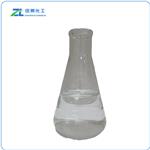
- $100.00 / 1kg
- 2024-04-22
- CAS:26590-05-6
- Min. Order: 1kg
- Purity: 99
- Supply Ability: 5000
- Polyquaternium-7
-
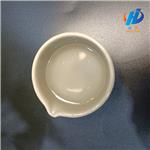
- $50.00 / 1kg
- 2024-04-19
- CAS:26590-05-6
- Min. Order: 1kg
- Purity: 99.10%
- Supply Ability: 5000kg




